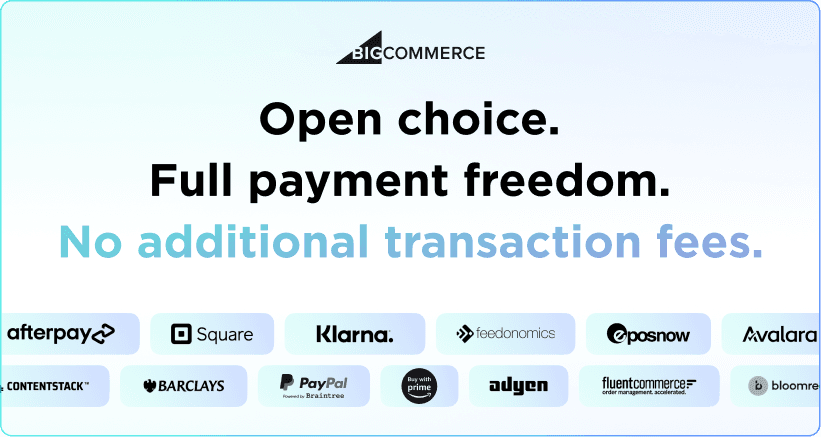
Brands who chose BigCommerce over Shopify:

Unmatched flexibility.

Shopify’s gated ecosystem charges you for “outside” solutions, adding up when you try to expand and constraining innovation as your business matures. Shopify monetises its client base through proprietary technologies with additional costs for using “outside” solutions. This creates a gated ecosystem.

BigCommerce empowers you to choose the best-in-class solutions for your unique business needs on a platform that’s flexible enough to evolve as you reach new stages of digital maturity. BigCommerce provides open choice to partner with best-in-class solutions. This empowers a flexible, modern ecommerce ecosystem.
Don’t just take our word for it.
Design seamless online brand experiences, your way.
“The question we asked ourselves was, ‘how do we find the quickest path to value? We didn't have 12 months to get things done, we had six months,” Naish recounts. We needed speed. We needed flexibility. We needed connectivity, but most importantly, we needed to demonstrate the viability of digital. BigCommerce had what we were looking for and it was cost effective, too.”
Luke Naish, Executive GM, Tradelink — Migrated from: Custom
Get modern capabilities and agility, natively.
“It was those two things, features and functionality, that really set BigCommerce apart from the pack and ultimately led us to replatform to BigCommerce.”
Joe Sharplin, Head of Ecommerce, AS Colour — Migrated from: Magento 1
Grow on your own terms, with no ceiling.
“BigCommerce is geared towards developers, but it also has that entry point where you can just jump in and start using it. You don't need to rebuild or reinvent the wheel if you don't want to, which was the big selling point for me.”
Steve Shapiro, Director of Ecommerce and IT, Music Direct — Migrated from: DotNetNuke
Adapt, launch, test, and innovate faster.
“Whether through price lists, customised commercial quotes or tax support, BigCommerce’s native functionality and extensive partner app marketplace delivers the hybrid B2C and B2B capabilities we needed to tailor our site to our diverse audiences.”
Sean Flaherty, Marketing Director, US Cutter — Migrated from: COREsense
Don’t let Shopify box you in.
Get more freedom.
Built for B2B
Meet buyer demands with a more intuitive, customisable platform. Our native solution B2B Edition makes it easy to build purchasing experiences as unique as your business.
Omnichannel
Reach shoppers everywhere with optimizsed product feeds and improved return
on ad spend with BigCommerce + Feedonomics.
Multi-Storefront
Scale beyond borders — your way. As you reach new levels of digital maturity, Multi-Storefront ensures you can seamlessly expand into new markets, regions, and channels.
Headless
Experience the freedom to design, build, and differentiate every element of commerce and bring your brand to life without ever needing to start from scratch.
Integrations
Connect with the essential frameworks and tools you already trust with a best-in-class
Expertise
Count on the industry’s most trusted experts for strategic migration, launch, innovation, and success support.
More big differences.
Ecommerce — your way.
Discover why more brands are leaving Shopify with a free demo today.
See for yourself.
Our team will contact you within 24 hours for a discovery call to take you through a demo tailored to your specific business needs.


